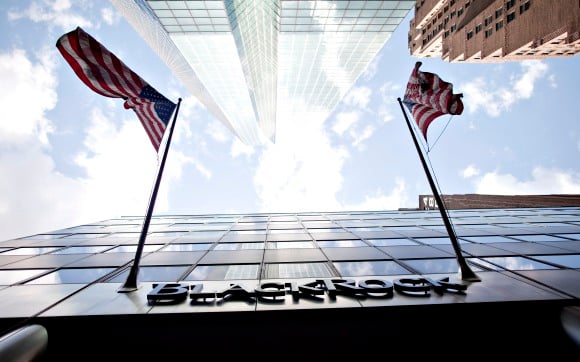The “new normal” is so yesterday. BlackRock Inc. launched its first retail branding campaign today and it's focused on a “New World” where investors need to get cash out of bank deposits and into investments.
“We need to educate investors about confronting the growing gap between needs and resources for retirement,” chief executive Larry Fink said in a speech at the Council on Foreign Relations this morning. “That means getting investors beyond the now inadequate 60/40 portfolio mix of stocks and bonds.”
Portfolios in today's world need to incorporate more alternatives and look for income in unconventional places, such as high-dividend-paying stocks, convertible bonds, master limited partnerships and emerging-markets debt, according to a statement from BlackRock.
Before investors can take advantage of the “New World” portfolio, though, they need to get out of low-yielding bank deposits, Mr. Fink said.
Bank deposits held $10 trillion at the end of 2011, up from $6 trillion in 2004, according to the FDIC, and there isn't any sign of a slowdown. Deposits grew three times faster in the first nine months of 2011 than they did in all of 2010.
RELATED ITEM Fund firms advisers recommend most »
Part of the challenge in getting investors to start … well … investing comes from the information overload of 24-hour news channels, the Internet, and Twitter — all of which are paralyzing their long-term thinking, Mr. Fink said.
“Much of the problem is our inability to look beyond the latest headlines as they change minute by minute with every blog or website update — whether it's about Greek debt or rising gas prices,” he said. “In today's wired world, people are bombarded with so much information and news — even if much of it is good — they can't interpret the good from the bad. It's affecting the decision making of everyone from the corner office to the corner drugstore and having a deeply unsettling effect on the market, with dramatic swings in trading.”
One piece of advice Mr. Fink had for advisers is to focus on the ability of investors to save for a longer time, rather than longevity risk. The average 50-year-old should have a 25-year investment horizon, he said. “They can use their longevity to ride out market cycles,” he said.







